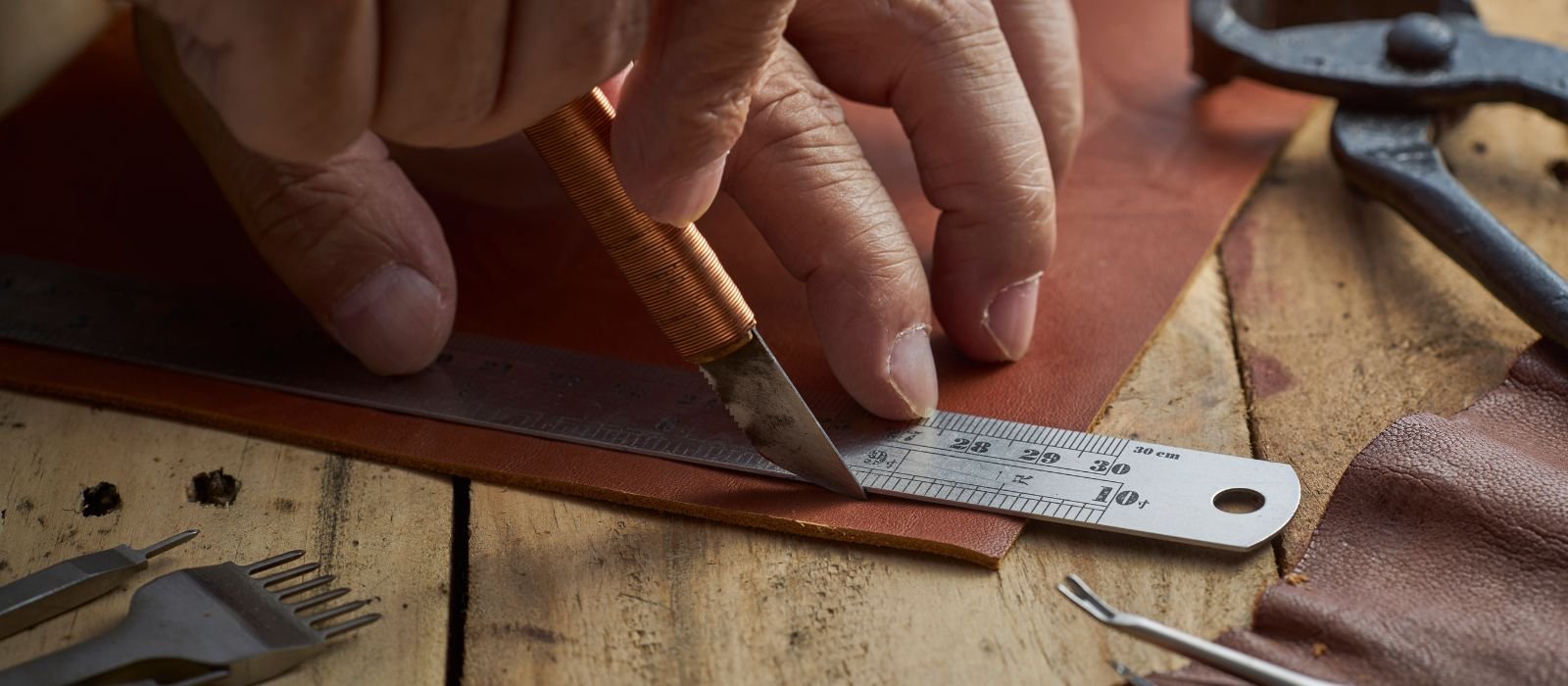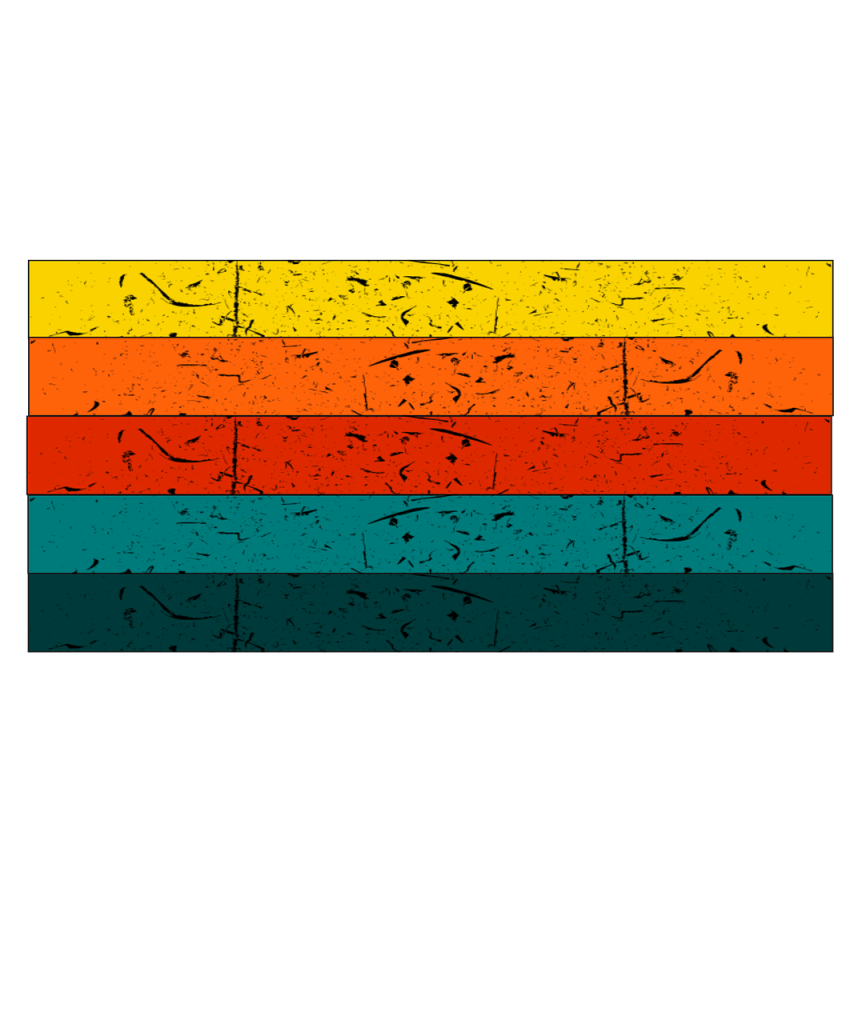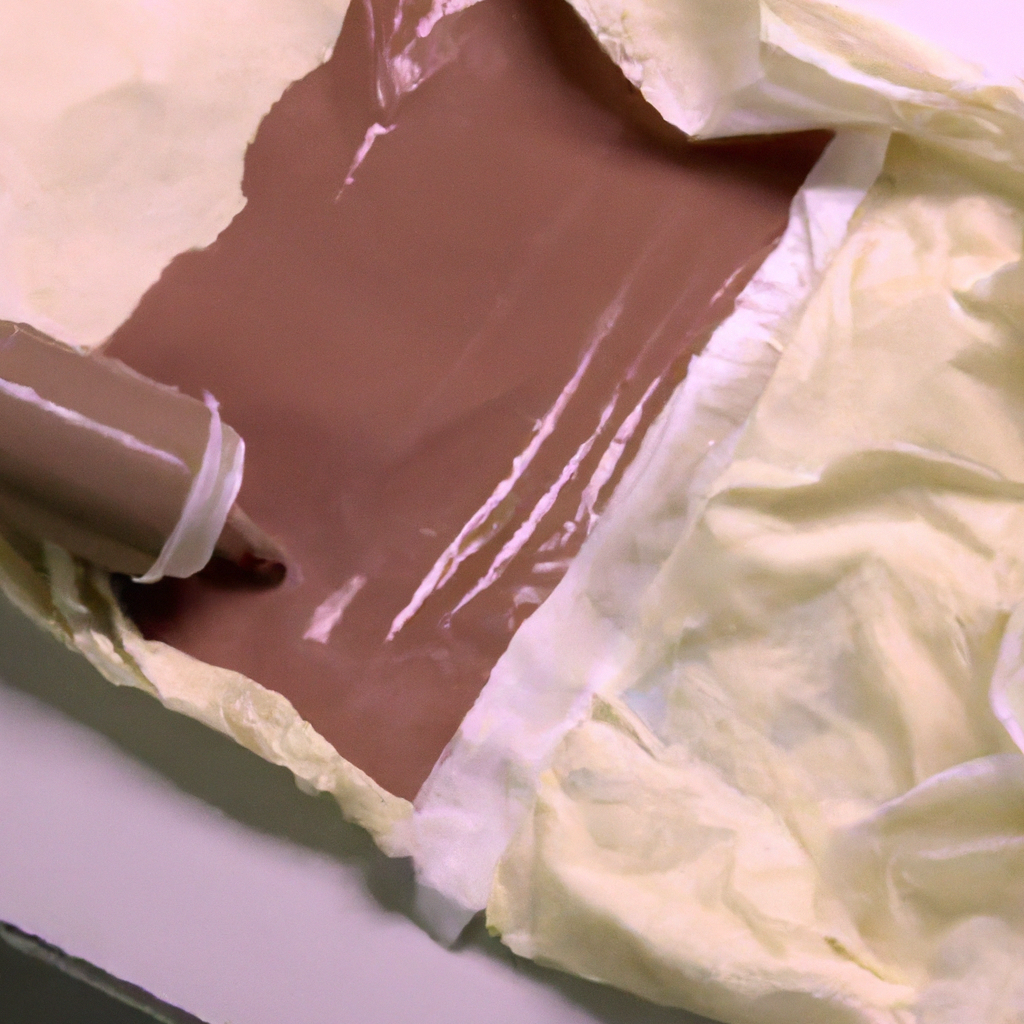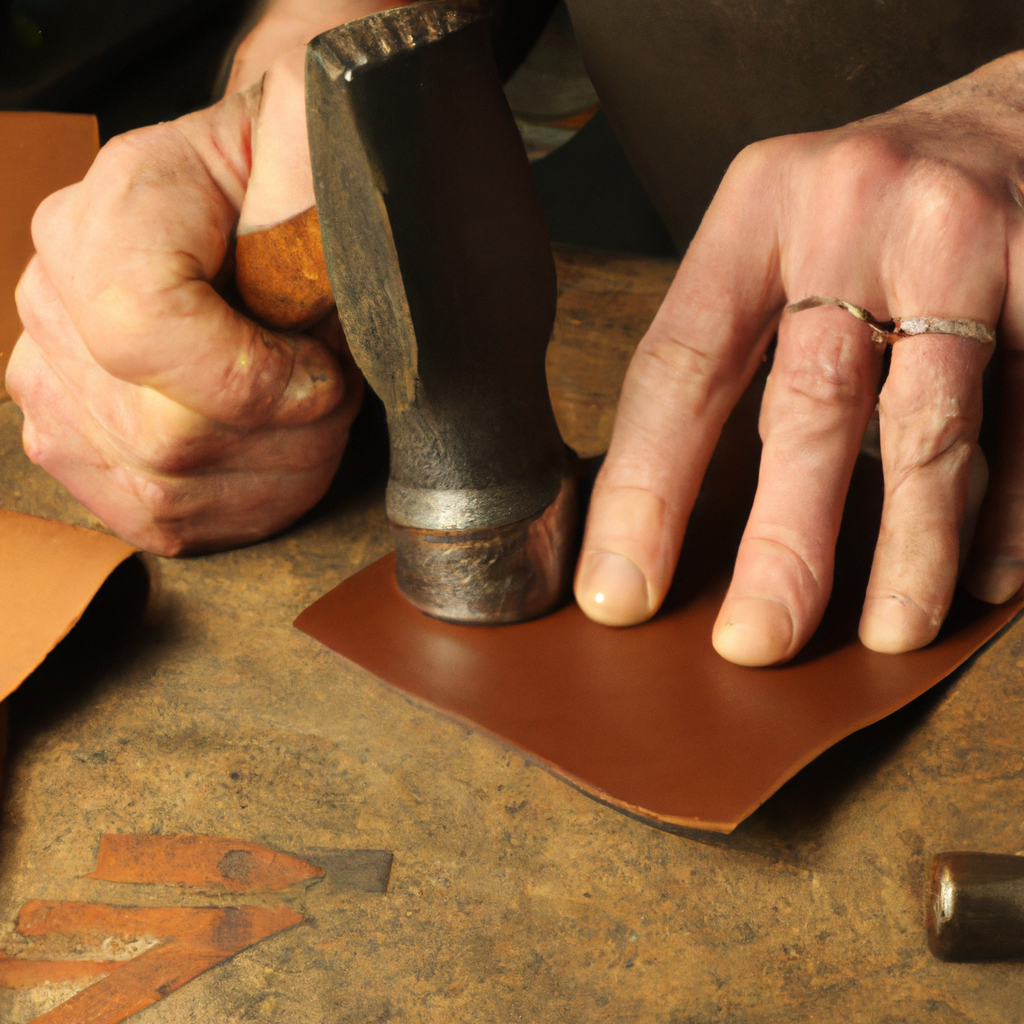If you’re looking to craft clean lines with a swivel knife, look no further! We’ve got a handful of tried and true tips to help you achieve those sharp, precise cuts. Whether you’re a seasoned pro or just starting out, these techniques are bound to elevate your swivel knife game. So grab that knife, take a deep breath, and get ready to create clean lines like never before!
Choosing the Right Swivel Knife
Consider the Blade Diameter
When choosing a swivel knife, one important aspect to consider is the blade diameter. The blade diameter determines the thickness of the lines it will create. For clean and precise lines, it is essential to select a blade diameter that suits your project’s requirements. A smaller blade diameter is preferable for intricate details, while a larger diameter is better for bold and thick lines. By choosing the right blade diameter, you can ensure that your swivel knife will meet your desired design outcome.
Look for a Comfortable Grip
Comfort is key when using a swivel knife, as it directly impacts the quality of your lines. Look for a knife that has a comfortable grip, allowing you to hold it firmly without straining your hand. A swivel knife with an ergonomic handle or a textured grip can provide added comfort and enhance your control over the tool. Remember, a comfortable grip will enable you to focus on creating clean and precise lines without discomfort or fatigue.
Check the Blade Quality
The quality of the blade is another crucial factor to consider when selecting a swivel knife. A sharp and durable blade will result in cleaner lines and prevent the material from tearing or fraying. Look for blades made from high-quality materials, such as stainless steel, that are known for their longevity and sharpness. It is also essential to regularly inspect the blade for any signs of dullness or damage and replace it promptly to maintain optimal performance.
Preparing Your Work Surface and Material
Ensure a Stable Work Area
Before you begin using a swivel knife, it is essential to prepare a stable work area. Choose a flat and secure surface that provides ample space for your project. Stability is crucial as it ensures that your hand movements are steady and controlled, resulting in clean lines. Avoid working on unstable or uneven surfaces, as they can affect your accuracy and compromise the quality of your work.
Clean and Smooth the Material
To achieve clean lines with a swivel knife, it is important to work with clean and smooth materials. Any dirt, debris, or imperfections on the material can interfere with the blade’s movement and create irregular lines. Before you start cutting, take the time to thoroughly clean your material, ensuring it is free from dust or any other contaminants. Additionally, smoothing the surface of your material by sanding or buffing can further enhance the precision of your lines.
Use a Cutting Mat or Protective Surface
A cutting mat or a protective surface is a valuable tool when using a swivel knife. These surfaces not only protect your work area from scratches and cuts but also provide a smooth and stable base for accurate cutting. The self-healing properties of a cutting mat ensure that your swivel knife’s blade glides smoothly, preserving its sharpness and minimizing any damage to the surface. Investing in a high-quality cutting mat or using a protective surface can significantly contribute to achieving clean lines with your swivel knife.
Proper Holding and Positioning of the Swivel Knife
Hold the Knife in a Natural Grip
When using a swivel knife, holding it in a natural grip is crucial for control and precision. Grip the handle comfortably, allowing your fingers to wrap around it naturally. Avoid gripping the knife too tightly, as this can lead to tension and involuntary movements, affecting the smoothness of your lines. By holding the swivel knife in a relaxed and natural grip, you can maintain better control over its movement, resulting in cleaner and more accurate lines.
Maintain a Comfortable and Relaxed Hand Position
In addition to holding the swivel knife in a natural grip, it is important to maintain a comfortable and relaxed hand position throughout the cutting process. Keep your hand and wrist relaxed, avoiding any unnecessary tension that can translate into jerky or uneven lines. Maintaining a relaxed hand position enables smoother movements and enhances the steadiness of your hand. Remember, a steady hand is key to achieving clean lines with a swivel knife.
Position the Knife at a Suitable Angle
The angle at which you position the swivel knife plays a significant role in determining the outcome of your lines. Experiment with different angles to find the one that best suits your technique and desired effect. Generally, holding the knife at a low angle, close to the material surface, allows for controlled cuts and clean lines. However, for certain intricate designs or curves, adjusting the angle accordingly can help you achieve optimal results. It is vital to find the angle that allows your swivel knife to glide smoothly along the material, resulting in precise and clean lines.
Applying the Right Amount of Pressure
Use Firm, Controlled Pressure
Applying the right amount of pressure is crucial to achieving clean lines with a swivel knife. Avoid applying excessive force, as it can cause the blade to dig into the material, resulting in uneven or jagged lines. Instead, use firm and controlled pressure to guide the swivel knife along your desired path. This allows the blade to cut smoothly without damaging the material, ensuring clean and precise lines every time. By practicing control over the pressure you exert, you can master the art of achieving clean lines with your swivel knife.
Avoid Pressing Too Hard or Too Lightly
Pressing too hard or too lightly can both have negative effects on the quality of your lines when using a swivel knife. Pressing too hard can lead to overcutting or tearing the material, resulting in messy lines. On the other hand, applying too little pressure can cause the blade to skip or drag, creating uneven lines or gaps in your design. Strive to find the balance between applying sufficient pressure to cut smoothly while avoiding excessive force. This balance will help you achieve clean and crisp lines with your swivel knife.
Experiment with Pressure for Different Effects
While maintaining consistent pressure is important for clean lines, it can also be beneficial to experiment with different pressure levels for various effects. Lighter pressure can create delicate and fine lines, ideal for intricate details or shading. Conversely, applying slightly more pressure can result in bolder and more pronounced lines, perfect for outlining or adding depth to your design. By varying the pressure you apply with your swivel knife, you can add versatility and dimension to your artwork while still maintaining clean lines.
Mastering Controlled Movements
Start with Slow and Deliberate Movements
When first using a swivel knife, it is essential to start with slow and deliberate movements. Rushing or making quick, jerky motions can lead to uneven or jagged lines. Instead, take your time and focus on executing each cut with precision. By starting with slow movements, you can build control and accuracy, eventually leading to cleaner and more polished lines. Remember, mastering controlled movements takes practice, so be patient and allow yourself time to develop your skills.
Practice Hand-Eye Coordination
Hand-eye coordination is crucial when it comes to achieving clean lines with a swivel knife. By practicing hand-eye coordination, you can enhance your ability to guide the knife along your intended path. One effective way to improve hand-eye coordination is by practicing tracing lines or shapes on paper. This exercise hones your ability to synchronize your hand movements with what your eyes see, leading to more precise cuts and cleaner lines. Consistent practice of hand-eye coordination will help you master controlled movements with your swivel knife.
Avoid Rushing or Jerky Movements
When working with a swivel knife, rushing or making jerky movements can have a detrimental effect on your lines. It is important to maintain a steady and smooth cutting motion to achieve clean and precise results. Rushing can compromise the accuracy of your cuts, leading to uneven lines or unintended mistakes. Similarly, jerky movements can result in jagged or wobbly lines. Remember to take your time, stay focused, and execute each cut with deliberate and controlled movements. This patience and attention to detail will contribute to achieving clean lines with your swivel knife.
Maintaining a Steady Hand
Breathe and Relax
Maintaining a steady hand is essential for clean lines with a swivel knife. One effective technique to achieve this is to focus on your breathing and consciously relax your hand. Taking slow, deep breaths helps regulate your body and reduces tension in your muscles. By consciously relaxing your hand and arm, you can minimize any involuntary movements that may affect the quality of your lines. Incorporate deep breathing and relaxation techniques into your practice sessions to maintain a steady hand when using a swivel knife.
Rest Your Hand or Arm If Necessary
During extended periods of use, fatigue can set in and compromise the steadiness of your hand. If you find your hand or arm becoming tired, it is crucial to take breaks and rest as needed. Continuing to work with a fatigued hand can result in shaky or uneven lines. By taking short breaks and resting your hand or arm, you allow your muscles to recover and regain stability. Remember, a steady hand is paramount for achieving clean lines, so prioritize your hand’s well-being throughout your work sessions.
Consider Using a Support Tool or Guide
If you struggle with maintaining a steady hand, using a support tool or guide can be beneficial. There are various options available, such as a wrist rest or a stabilizer, which can provide additional support and stability to your hand. These tools help minimize any unwanted hand movements and allow for more controlled and precise cuts. Experiment with different support tools or guides to find the one that best suits your needs and helps you maintain a steady hand when using a swivel knife.
Going Slow and Gradual
Take Your Time
One of the key tips for achieving clean lines with a swivel knife is to take your time. Rushing through your work can lead to careless mistakes, uneven lines, and an overall lack of precision. By allowing yourself ample time to complete your cuts, you give your full attention to each detail, resulting in cleaner and more professional-looking lines. Remember, the quality of your work is more important than speed, so embrace a slow and deliberate pace when using a swivel knife.
Focus on Small Sections
To achieve clean lines, it can be helpful to break down your design into smaller, manageable sections. Focusing on one section at a time allows you to concentrate your efforts and attention on each detail. By tackling smaller sections, you can ensure that you give sufficient time and attention to each cut, resulting in cleaner lines. As you complete each section, you can gradually build upon the lines, creating a cohesive and precise design. Taking a step-by-step approach helps maintain accuracy and control throughout the cutting process.
Build the Line Gradually
Building the line gradually is crucial when using a swivel knife to achieve clean lines. Instead of cutting in one continuous motion, start by creating light and shallow grooves. These initial grooves act as guides and allow you to refine the line as you progress. Once you have established the basic shape, gradually deepen the cut, working with your initial guides. This gradual approach ensures that you have better control over the depth and direction of the line, resulting in cleaner and more defined lines. Patience and attention to detail are key when building lines gradually with a swivel knife.
Using the Right Swivel Knife Technique
Use a Pull Stroke Motion
One effective technique when using a swivel knife is to employ a pull stroke motion. Instead of pushing the blade forward while cutting, pulling the blade toward you allows for better control and cleaner lines. With a pull stroke motion, the blade is less likely to veer off course or create uneven lines. When using the pull stroke technique, ensure that the blade is sharp and properly aligned with the direction you want the line to follow. By utilizing a pull stroke motion, you can achieve smoother and more precise lines with your swivel knife.
Try Different Angles and Movements
Exploring different angles and movements is an excellent way to enhance the versatility of your swivel knife. By varying the angles at which you hold the knife and experimenting with different cutting techniques, you can achieve a range of effects and styles. For straight lines, holding the knife perpendicular to the material’s surface will yield the best results. However, when working with curves or intricate patterns, angling the knife accordingly can help maintain smooth transitions and clean lines. Don’t be afraid to try different techniques and discover the ones that work best for your desired design.
Angle the Knife to Follow Curves
When working with curved lines, angling the knife to follow the curves is essential for achieving clean lines. With a swivel knife, you have the advantage of its rotating blade, allowing for greater flexibility when navigating curves. Experiment with angling the knife slightly to match the curves of your design, ensuring that the blade is in constant contact with the material. As you move the knife along the curve, be mindful of maintaining a consistent angle, which will result in smooth and precise lines. By properly angling the knife, you can master curved lines and add depth to your swivel knife creations.
Maintaining and Sharpening the Blade
Clean the Blade Regularly
To ensure optimal performance and clean lines with your swivel knife, it is crucial to clean the blade regularly. Residual debris or built-up material on the blade can impede its movement and compromise the quality of your cuts. After each use, take the time to wipe the blade with a clean cloth or a gentle cleaning solution. This will remove any residue and keep the blade in optimal condition, allowing for smooth gliding and precise cutting.
Sharpen the Blade When Dull
A dull blade can significantly impact the quality of your lines when using a swivel knife. To maintain clean lines, it is important to sharpen the blade when it starts to lose its sharpness. There are various sharpening tools available, such as sharpening stones or honing guides, that can help restore the blade’s sharp edge. Follow the manufacturer’s instructions or seek professional guidance to ensure that you sharpen the blade correctly. Regularly sharpening the blade will ensure that it remains in optimal condition for achieving clean and precise lines.
Replace the Blade as Needed
Even with regular maintenance and sharpening, blades eventually wear out and lose their effectiveness. As soon as you notice a decline in the swivel knife’s performance or the quality of your lines, it is time to replace the blade. Continuing to use a worn-out blade can result in inconsistent lines or damage to the material. Keeping extra blades on hand allows for a seamless transition and ensures that you can achieve clean lines with a sharp and reliable swivel knife. Stay attentive to the blade’s condition and replace it promptly when necessary.
Practice and Patience
Practice on Scrap Materials
Practice is key to mastering the use of a swivel knife and achieving clean lines. Before starting a project, consider practicing on scrap materials that are similar to your intended workpiece. This allows you to familiarize yourself with the tool, experiment with techniques, and refine your cutting skills without the pressure of a finished piece. As you practice on scrap materials, pay close attention to your lines, adjust your technique as needed, and strive to achieve cleaner cuts. Regular practice will build your confidence and proficiency with a swivel knife, resulting in consistently clean and precise lines.
Be Patient With the Learning Process
Learning to achieve clean lines with a swivel knife takes time and patience. Understand that it is a skill that develops over time with consistent practice. Embrace the learning process and be patient with yourself as you navigate the challenges and seek improvement. Allow yourself the opportunity to make mistakes and learn from them, as they are valuable lessons that contribute to your growth as an artist. By staying committed, persistent, and patient, you will undoubtedly master the art of achieving clean lines with a swivel knife.
Embrace Mistakes and Learn From Them
Making mistakes is a natural part of the creative process, and it is essential to embrace them and learn from them. When using a swivel knife, mistakes may occur, such as uneven lines or accidental slips. Instead of becoming frustrated or discouraged, view these mistakes as opportunities for growth and improvement. Take the time to analyze what went wrong, adjust your technique or approach accordingly, and try again. Learning from your mistakes contributes to developing your skills, refining your technique, and ultimately achieving cleaner lines with a swivel knife.








